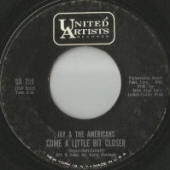

“La Bamba was the single in the stack of 45s that everybody carried around when we were growing up – sure, let’s pay tribute to him.”Įxciting as it was, the band’s expectations were low. “The request came directly from Ritchie’s family,” says Pérez. Their breakthrough came in 1987 when they were asked to record a handful of Ritchie Valens songs for a biopic about the late rocker. The band’s reputation for thrilling live shows grew, and they won their first Grammy for Anselma, a rousing tejano number taken from their 1983 EP. “I remember they threw this big wad of wet paper, and it hit Dave in the face.” “The pennies and the dimes started coming in, and then the quarters started coming in,” Rosas told author Chris Morris in the biography Los Lobos: Dream in Blue. The crowd responded with spit, jeering and projectiles. At one notorious gig, they played a set of acoustic Mexican standards when opening for post-punks Public Image Limited. Getting gigs with fellow artists such as the Blasters (from whom they pinched saxophonist Steve Berlin) and Latino punk group the Plugz, Los Lobos wowed and angered audiences. These grandmas would come up and bless us.”Īs their sound evolved to once again incorporate electric instruments and rock rhythms, the band found their way to the other side of the LA River and the thriving punk and roots rock scenes of the early 80s. Then we’d start playing and all of the sudden, they’d unfurl the blankets. “We’d be at some event in the park and the old people would be rolling up their blankets, ready to leave. Soon, the band was playing all over east Los Angeles, looking, as Pérez puts it, “more like Crazy Horse than a Mexican band,” and making connections with multiple generations of Chicanos. Then we got totally immersed in it.” The group studied the records in their parents’ collections and snapped up instruments such as the guitarrón and requinto jarocho from pawn shops.

“It was in the background and we didn’t even hear it any more. “It was kind of like car alarms,” remembers Pérez. But what bonded them was the traditional Mexican music that was a mainstay in their respective households. The core members – Pérez, singer-instrumentalist David Hidalgo, guitarist Cesar Rosas and bassist Conrad Lozano – were initially drawn together in the 1970s by their love of psychedelic rock and cut their musical teeth in various LA cover bands. Trying to perfectly replicate the sounds of the past has been a hallmark for the band.

“But once they all got to the party, everyone in the band thought, ‘Hey, this is kind of fun.’” “You wouldn’t run into at the same party,” says guitarist Louie Pérez Jr. With covers of well-known pop tunes by the Beach Boys (Sail on Sailor) and Buffalo Springfield (For What It’s Worth) sitting alongside rare cuts from 60s garage rockers Thee Midniters and Latin jazz legend Willie Bobo, it’s the perfect polyglot collection for this multi-faceted ensemble. Native Sons, their 17th studio album, is a wide-ranging celebration of the LA artists that inspired the band early on. Now, to move forward, Los Lobos decided to look back.

On their way up, and indeed back down the other side, the Los Angeles roots-rockers have mastered multiple musical styles during nearly 50 years together – from traditional Mexican folk to jump blues and avant-rock – and have earned 11 Grammy nominations (with three wins), working or appearing with Paul Simon, the Clash, film-maker Robert Rodriguez and more along the way. L os Lobos reached pop’s pinnacle in 1987 when their cover of La Bamba, recorded for a film of the same name, reached No 1 around the world.


 0 kommentar(er)
0 kommentar(er)
